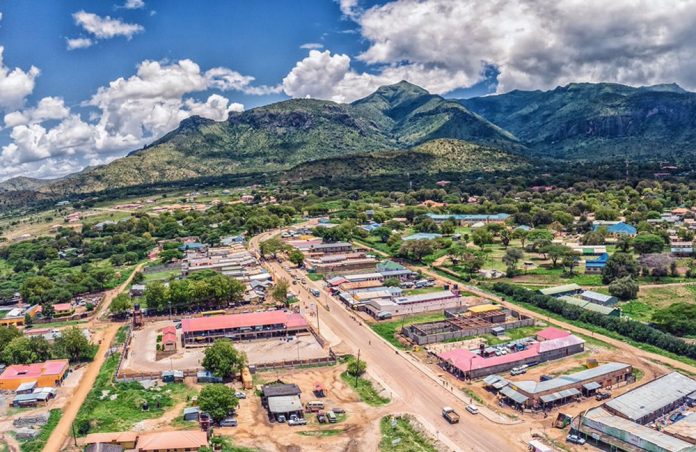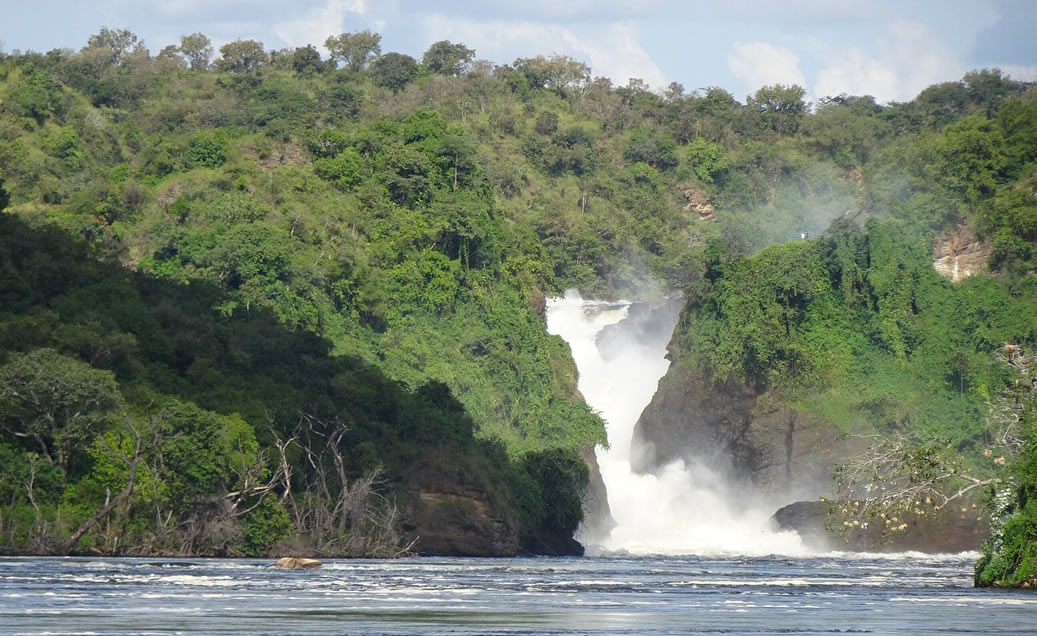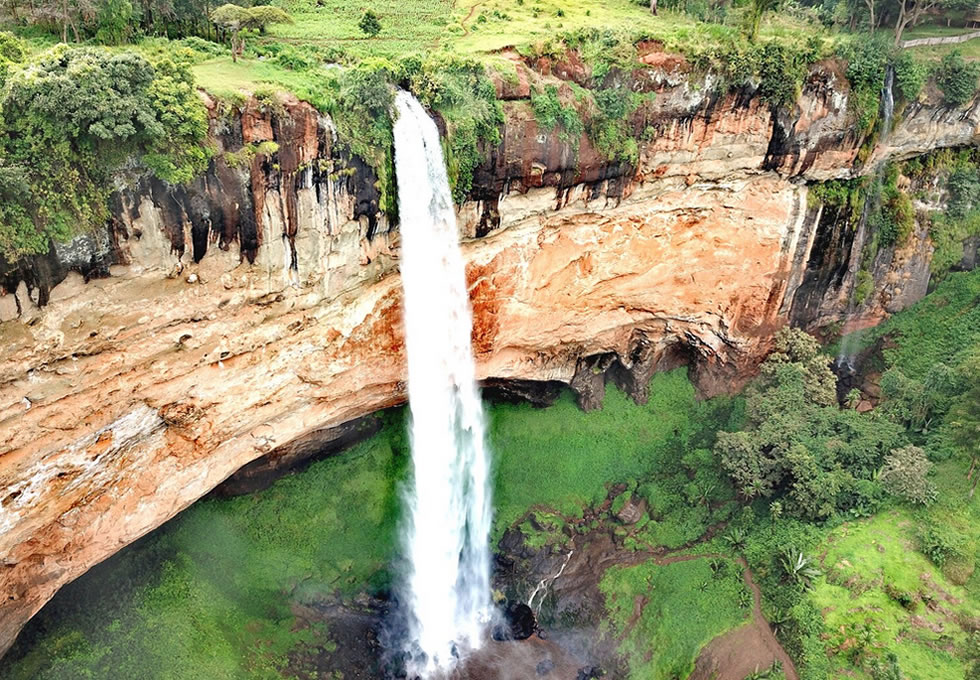When most people visit Moroto, a small town built along with the vast ranges of Mountain Moroto, they can’t help but fall in love with it.
It is one of the few places in Africa that offers the best of both worlds: The rich authentic culture of yesterday’s Africa and, the pleasures that come with modernity; fancy hotels, cellphones, and ATMs, and internet cafes. It is difficult to access as it is over 500 kilometers from Kampala, but even more so to leave. Its population is 103,432.
Life on the Moroto streets
As you take a stroll on its spacious streets, most of which feature buildings built in post-colonial times, your ears will be confronted with a hectic mix of foreign languages.
It is mostly from locals who came for a visit only to return as permanent residents at the realization of the gem that is Karamoja. Despite this variation in originality though, the town seems to have less than few strangers. People constantly run into friends and acquaintances. It is like a family, everybody knows everybody. This explains why people are usually late for meetings. As they journey to their destinations for the day, they meet a batch of close ties they cannot help but exchange pleasantries with.
The courtesy is not exclusive to residents only. Through heartfelt smiles, they will happily welcome you to a home away from home.
Infrastructural development
Contrary to popular belief, the town is served with impressive tarmac. However, as you drive out of town, you start to encounter roads that are only wide enough for one car at a time. Driving is negotiated through series of elaborate hand gestures. Like these roads, everything in Moroto requires cooperation and is done communally, harvesting crops, protecting herds of cattle, getting married.
The latest development in the town is the construction of a UGX25Billion state-of-art complex of Moroto hospital. It is comprised of 10 departments, including an outpatient section, emergency wards for causalities and recovery.
According to the Hospital Director, Philbert Nyeko, the work which was concluded in October 2015 was funded by World Bank.
The establishment follows a recent elevation of the facility from a General Referral Hospital to Regional Referral Hospital status (on 1 July 2009). In its new state, the hospital which was built in the 1940s now has a capacity to handle 500 patients at once. This makes it a lifesaver in the Karamoja sub-region, a catchment area of 7 districts in the region which include: Moroto, Napak, Nakapiripirit, Kaboong, Kotido, Abim, and Amudat.
Cattle keeping
There is a considerable fraction that still herds cattle. Their looks may not be desirable as they are not fat but like a mother would love her child, they live and die for their cattle, just like their ancestors. They can’t bear to see them suffer as they are not only a means of dowry, but also symbolic of wealth. They would rather have a kraal full of cows than living an “air-conditioned” life. Beyond that, the culture of keeping cows is what connects them to their priceless heritage and roots. That is something they can never trade for anything under the sun, not even in their next life.
When the time for killing these cattle comes, they do so in the fastest but least painful ways. This is what sets them apart from ordinary farmers.
Trends
As carrying a flashy phone is the custom in developed cities, in Karamoja, carrying a stool and walking stick is the in-thing for men. Atop their heads is usually a hat that flirters their height making them look slightly taller than reality. This is partly because height is everything in Karamoja, an explanation as to why the giraffe comes across as their totem. The message behind this is stand tall and be strong. The symbolism also highlights their ability to strike dead anyone who threatens their cows with a single bullet, like a giraffe would strike dead any beastly carnivore with a single blow.
Generally, the locals are friendly and would not hesitate to invite you to their humble homes for lunch, especially in the harvest season when the town comes alive. Considering their land is faced with drought for much of the year, this season which usually comes around July and November is a big deal. So big that it usually prompts a festival-like celebration, one in which locals party from dusk to dusk while grooving to favorite local songs like Edonga. It is a traditional dance that entails jumping like the earth beneath one’s feet is ablaze with hot charcoal.
Activities/Things to do
1.Karamoja Museum
Moroto is home to the Karamoja Museum, a wonderland that gives a deep insight into what the world was like before man was born. If looks are anything to go by, one would be forgiven for omitting a visit to this museum off their to-do list. On the outside, it looks just like an ordinary two-bedroomed rental house. What is more, it seems like forever since it received a fresh coat of paint. The little that is there is peeling off, making the building not very inviting. There is nothing fancy about the facility whose construction was spearheaded by the French Government. However, its inside is the exact opposite. It boasts of archeological findings that no amount of money can buy. Most of its fossil exhibits are over 3 million years old. They were mostly exhumed from mountains in the Karamoja region where they were buried as a result of volcanic activities. This includes teeth of the oldest known fossil monkey known in the world,19-20 million years back. Victoria pithecus macinneni is its name, it was roughly the size of a velvet monkey.
2.Hike Mountain Moroto
Over 60 years back, it gave Moroto its name, a Karamojong word that loosely translates as the rocky place. If you visit it, it will give you the most extraordinary views of the semi-arid District and its impressive collection of well-thatched manyattas. I am talking about Mountain Moroto, a landmark that has turned out to be the District’s hallmark.
It has its highest point, standing at an elevation of 3,083meters above sea level. It is one of the few mountains in Uganda that you can hike in a total of three hours. For starters, its gradient is gentle, this pauses a less straining hiking challenge. Secondly, is the weather is not punishingly cold. This will lessen your vulnerability to altitude sickness. The best part of the story is that hiking is free. All you have to do is seek permission from the surrounding community before attempting to hike it. The bad news is that the Mountain is not safe for tourism at the moment. The locals are hostile following NFA’s alleged sale off of the forest zone of their mountain to some timber dealing investor.
3.Visit Edurkoit tree
When you drive into Moroto’s relatively busy but peaceful streets, the first thing that grabs your attention is a Faidebia Albida, a majestic tree that has been around even before Uganda’s first President was born. Situated in the middle of the town’s main street, it is probably around 150 years but you will have a hard time believing it as it is still perfectly in shape and looks forever young. Its roots have sunk deep in the ground anchoring it firmly in the Karamoja soils. Compared to trees in forests found in Southern and Western Uganda, its stem is less thick yet firmer. In contrast, its branches and leaves are light enough to be easily swayed but not broken by the strong crosswinds that sweep through the District daily.
Locally known as Edurkoit, it stands at what used to be home to one of Karamoja’s forefathers, Lokom. At least that is what I got to know thanks to Longora John, a 65 year Local Leader in the District.
“He was a martial warrior under whose reign Karamoja triumphed and accumulated lots of wealth, especially cattle (as raided from neighboring tribes such as Pokot, Turkana, Kalenjin….). He means to the Karamojong what Shaka Zulu meant to South Africans and what Pharaoh meant to the Egyptians.” he enlightened me
In agreement with Longora, Hellen Pulkol, Deputy RDC of Moroto observes that under the tree’s shades, elders used to converge to find lasting solutions to whatsoever was troubling their tribe. It could be settling disputes among its people, celebrating the lives of unsung heroes who have contributed to the growth of their clans. It is also here that plans were made on how to successfully invade rival tribes for cattle. Simply put, the tree has a very special place in the hearts of the Karamajong people.
“That is why they are never cut for firewood regardless of how desperate the situation at hand is.” she delights
4.Visit Manyattas
Edurkoit, is not the only thing that has stood the test of time. The Manyattas have been preserved. Manyattas are traditional home settings of the Karamojong. They are mostly single-roomed structures, thatched with spear grass on the top and walled off by mud. They are eco-friendly and really cool on the inside, this makes them a sweet paradise in this region where temperatures shoot as high as 32 degrees.
In a move aimed at making them less penetrable to cattle raiders, they are fenced off using venomous species of acacia trees. They are spiky.
Accommodation
Over the years, Moroto has always emerged victorious, not by repelling modernity but by not subsuming them. The town abounds with eat-outs and an array of hotels that offer inter-continental foods. This makes it a perfect place to visit without compromising on one’s comfort, especially for the type of traveler who is deeply in love with modernity. One particular recommendation in this regard is City Friends Hotel, a Motel at the heart of the town.
Nightlife
If you love night walks, you will love this town. Several streets are peaceful, well light and cozy. On the side of partying, there are not so many options as far as drink outs are concerned. However, the few that are there are worth a try though simple and still traditional. So much like country pubs. Most of these are found along the main street. typically, they are all about beers and sodas. Unlike Kampala, the joints here keep their volume in check. This allows easy chats without shouting at the top of one’s voice.
More Information
Location
To the North, bordered by Kabong District, Kenya to the east, Amudat District to the south, and Nakapiripirit District to the south-west. It sits at an elevation of 1,380meters above sea level.
Travel Tip
If traveling using private means, be sure to opt for a four-wheel drive. The last 100+ kilometers leading to the District is made of earth roads. It gets really messy in rainy seasons, April-June.
For the Budget traveler, there is only one bus that travels directly to Moroto on a daily. Its Gateway Bus, found in Buganda Bus Park. It departs at 4 am and usually reaches 12 hours later, enroute between Mbale and Soroti. It costs between UGX30,000-45,000 depending on the time of the year.
In case of any health emergencies, one can reach Moroto Regional Referral Hospital on 0786469559. It is a fully-fledged Government hospital and offers services for free.










